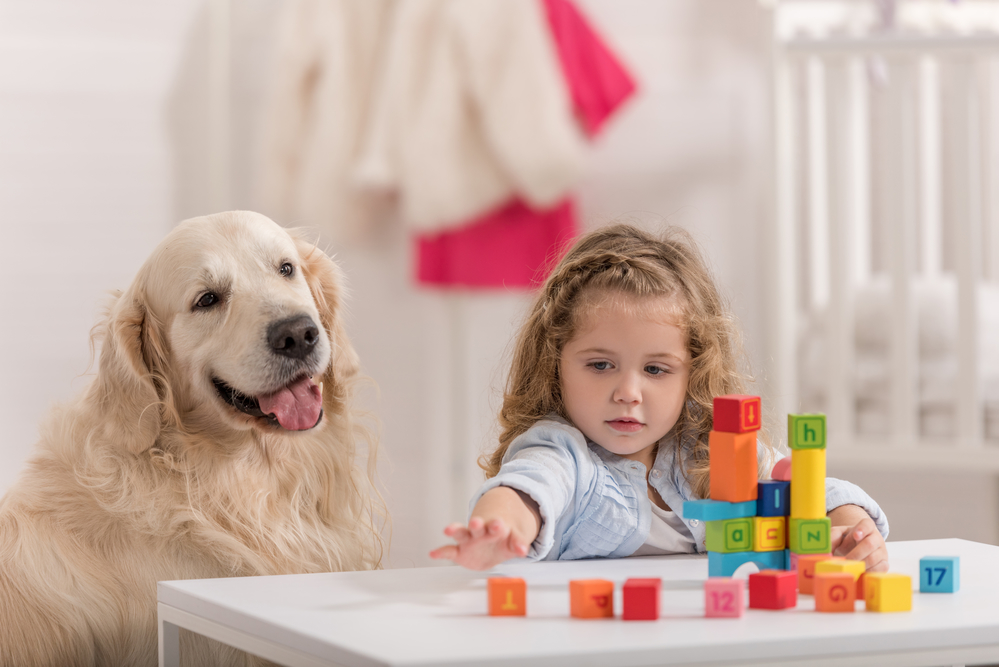Mrs Jay Anderson
Dogs. Lots of people have a dog, or grew up with a dog. Some couples get a dog, so they may say….to practice to caring for a child. Others get a dog for their child. Perhaps it’s the first family pet. Other times there may have been a few pets first. Perhaps it was a bird, or goldfish, or a rabbit. Think about what pets you had as a child……..what you liked about it. What worked well?
For many people, their dog is their best friend…….reliable, happy, fun, a constant companion, a listening ear, non-judgemental and enthusiastic. For many families, individuals and couples in the community, their dog is a part of the family. Their dog may be living inside or outside. They may all interact every day-Down at the park, off to the beach, walking in the neighbourhood – dogs fit in anywhere…..Whether you walk your dog “on a lead” or let your dog “run free”, communicating with your dog is important for the whole family
For all of us, children, adults and pets- communication is essential to living. If you were living with someone from another country, another culture or another planet you would need to work hard at understanding them, at focusing on how best to communicate. We would use our eyes and ears to notice – our voice and hands and body to speak, move and signal. So if you think about this all – about watching, listening, noticing and then responding – you are on the best path to a positive and interactive relationship with your dog. The most important consideration is observation and then connection – communication with voice and body language.
How do you interact with your dog? What have you noticed about how your dog spends time with you? What do you notice about the children and their interaction with your dog?
You may have noticed that dogs use a number of things to communicate with us:
Eye movement and eye contact
Using sound (barks)
Tail posture and position
Mouth position – Tongue flicking
Exposing their belly, lying on their back
Bringing things to you
Leaning against you
Yawning and sneezing
Playful/play bowing
Freezing or stopping suddenly
Raising a paw
If you live with a dog you will notice there are different types of barks – different tones and different frequency/rate. Check out how your dog looks at you and what it does. You might notice that there are different tail postures and head movements to indicate different things. Humans are discovering that Dog-human and dog communication is infinitely more complex than these basic cues: posture, tail movement, and vocalizations. And many people realise that these cues differ depending on the situation and may also vary by individual dog and breed.
Actually, dogs are quite good at communicating. Often though, it is Us humans, who miss the cues or don’t understand. It is important that we can understand each other – for survival, safety and connecting. At times, we need our dog to understand that we want our dog to come to us, or to understand us – and at other times, our dog needs us to know it is hungry, thirsty or hurt. So by listening and watching your dog, you can improve your understanding of each other.
The whole family can get out and about with your dog. I suggest that you do pay particular attention to how your dog is with saying “hello” to another dog when both dogs are on “lead” versus. Try and notice how your dog is when it is free, and another dog is on “lead” versus how your dog is on “lead” when another dog is “free”. See how both dogs are when they are both free!! Even our human body language can differ in these situations. But it can be useful and interesting to know your dogs differing responses and understand your dog’s communication better.
Children often do enjoy spending time with the family pet. A dog in particular, can have a special bond with your child. It’s a friend who listens and doesn’t judge. A playmate down at the park. Dogs can be a comfort and a loved friend. Many people speak fondly of their time with pets while they were growing up.
Enjoy some time together……. Pay closer attention to what your dog is saying to you – to the adults, and to the kids. A greater understanding will help everyone in the family connect better. Watch, listen, and notice…..Have fun!!
You may also like to read:









